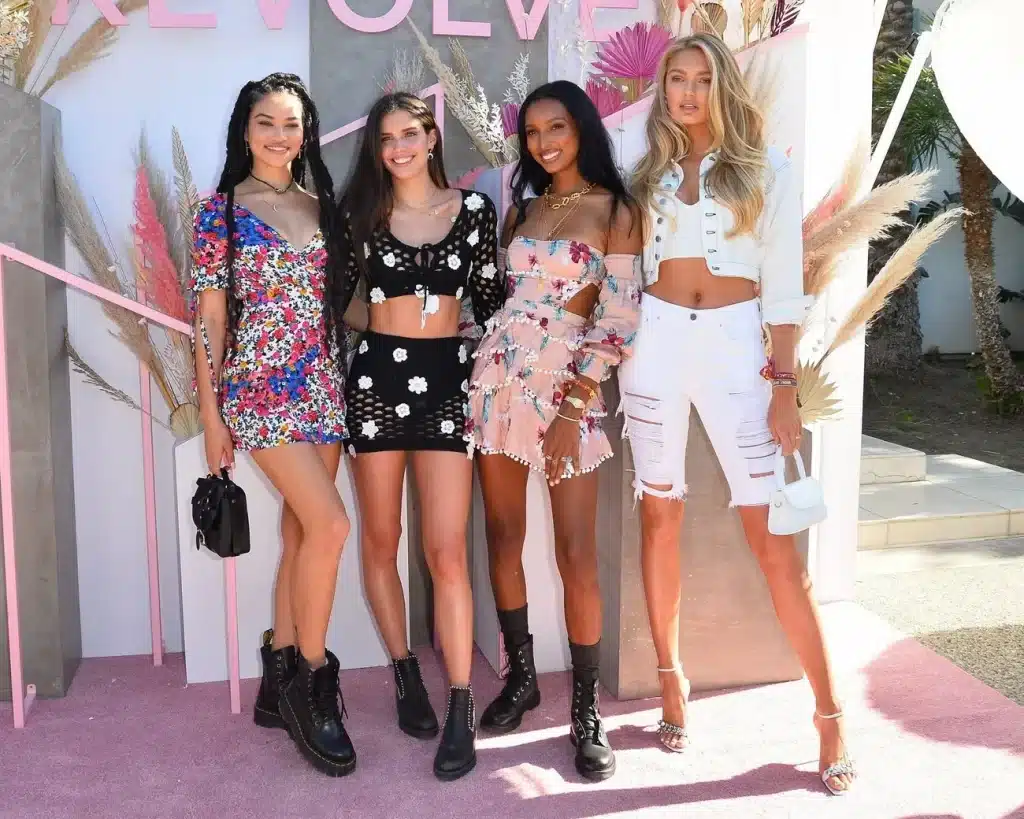Age groups on social media. To market towards multiple demographics takes great powers of empathy – and deep knowledge of how different types of people interact with the digital world. You need to know how different demographics use digital, and how they experience it, essential for capturing new customers most cost-effectively.
In this article, we’re going to shine a light on one crucial pillar of the digital world – social media – as it looks at different age groups. We’re going to try to give you a better understanding of how people of different ages use social, and we’ll also offer some pointers on how to turn your understanding into a strategic advantage.
Over 65s
We’re making a point of starting this guide with the over 65s age group – because amongst some social media marketers, there remains an unfortunate tendency to under-value older audiences.
There’s a pretty good reason why some marketers make this oversight – according to a study, social media account ownership amongst over 65s was down at 12% as recently as 2011. By 2018, just seven years later, it was reported that this figure had risen to 37%. Even if you’re just a year or two behind the curve, it would still be easy to misgauge this age group’s value and influence.
Whilst younger age groups are showing a tendency towards using a wider variety of social media, notably including Instagram and Snapchat, the overwhelming majority of social users over the age of 65 solely use Facebook, 41% of those over 65 are currently using Facebook, with LinkedIn a distant second on 9%. From a short-term perspective, this tells us that Facebook is the channel to focus on when it comes to marketing to older people – though that could all change in the space of a few years.
Senior Facebook users have generally demonstrated a tendency towards using the platform primarily to network and participate in conversations; in contrast with the youngest users, many of whom are more interested in identity-forming activities like posting selfies. Key topics for older social users are health and community.
Aged 50-64
Who could have predicted, ten years ago, that by now the majority of those aged 50-64 would have a social media profile? As it stands, around 65% of people in this age group have a Facebook profile, whilst significant minorities are also signed up to other social media like LinkedIn (24%) and Instagram (21%)
Amongst this group is a notable concentration of high-ranking professionals who use the business-oriented social network, LinkedIn (24% of the age group have a profile).
The patronage of corporate decision-makers has contributed to LinkedIn’s emergence as perhaps the single most important platform for social selling.

Aged 30-49
Of the many points to be made on how thirty- and forty-somethings are using social media, perhaps the most striking – and surely the most topical – is that those aged between thirty and forty-nine are easily the most likely to get their news from social media. We found that 40% of those aged 30-49 use social media as a news source, compared with 26% of 50-to-64-year-olds and just 25% of those aged 18-29. Facebook can lay claim to the highest proportion of users browsing for news – 45%.
This presents marketers with an opportunity on one hand and a challenge on the other. There’s significant scope to target this age group with quality content marketing via social media – but the caveat is that most of us will need to aim for quality over quantity if our content is to embody the quality journalism that many adults are now seeking on social, as well as in print.
The increasing use of LinkedIn, Twitter and Facebook as news sources has reframed perceptions of what social media can be. Until recently, much of the discussion around social and news has revolved around the empowering of social media users to break news faster than any reporter ever could – an inversion which has profoundly changed how news is sourced and reported by journalists. Now, we’re talking about social media platforms as more than just wellsprings of news – we’re talking about them as curators, distributors and publishers in their own right.
Millennials
Like other aspects of digital, the rate of change in social media – its forms, its platforms, its uses – is growing at an exponential rate. One of the consequences of this trend is an increasing rate of behavioural change amongst new web users. For this reason, we see a far greater variation within generational age groups towards the lower end of the scale.
Amongst younger millennials, we can see the emergence of two key trends. Firstly, those aged 18-24 are showing a far stronger tendency than their older peers towards using image-led social media. According to a recent survey by Harvard IOP – How Millennials Use Social Media – 51% of those aged 18-24 use Instagram, vs. 34% of 25-29-year-olds. The disparity in Snapchat use is even more pronounced, at 42% to 20% in the younger group’s favour.
This isn’t to say that Facebook and Twitter are falling off the face of the Earth – in fact, these relative antiques also enjoy higher uptake amongst younger millennials, though the disparity in usage is smaller (Facebook use is 83% vs 82%; Twitter use is 43% vs 35%). This presents us with our next key finding: that social media use is more widespread and platform spread is greater amongst younger millennials.
What to do with this information? The first, and perhaps the most important point is that Snapchat and Instagram need to play a part in your social strategy – especially if your target audience falls within the late millennial age range. To this end, there are several options at your disposal. You might:
• Engage agencies specialising in Instagram and Snapchat, who can deliver or support your work
• Factor Instagram and Snapchat into the ongoing training of your existing team members
• Hire junior staff who are active users of the relevant social media. You might consider people with established and widely-followed Instagram profiles as especially suitable candidates.
• Download the apps onto your phone and start using them. If you’re going to communicate with customers using a certain channel, you should surely have some idea of the user’s experience. There’s no better way to gain that insight than to become a user yourself. Even if you’re a generation or two removed from the average Snapchatter, what better excuse to wind up your kids?
Now to address our second key learning – that younger millennials are using a greater variety of social media. One of the toughest challenges of marketing to a multi-channel audience is keeping track of interactions on a channel-by-channel basis – especially if you want to market programmatically.
The preferred solution to this problem is to create a single customer view (SCV), in which data on every channel you use is compiled into a single analytics interface. This will allow you to view all of your marketing activity on a customer-by-customer basis, to spot trends and interplay across channels, and ultimately to deliver strategically airtight omnichannel marketing.
Another important point to consider across the full millennial age group is the importance of what some marketers refer to as “dark social” – which simply means social media interactions we can’t measure, like instant messages sent through apps like Facebook Messenger and WhatsApp.
Dark social is problematic because it’s much harder to understand the value of dark social engagement than it is to measure, say, the conversion rate of a marketing email. In this sense, dark social bears some similarity to harder-to-measure marketing methods like TV advertising and billboard campaigns.
Digital marketers have come up with a few decent ideas on how to work out the value and volume of your dark social traffic, largely based on taking more holistic approaches to measurement. Add tags to the landing page URLs you distribute on social, try to identify a correlation between successful social campaigns and spikes in your direct traffic, and most importantly of all, be aware that dark social is a factor in your social marketing performance.
Generation Z
Not only is understanding how teenagers use social important to optimising marketing campaigns in the short-term – it’s also crucial to our ability to better adapt our long-term strategies. Today’s teens display a continuation of the trend we’ve seen among millennials – towards higher uptake of the leading image-led social platforms, Snapchat and Instagram. Companies like Magic Pony Technology (recently acquired by Twitter) are currently developing better AI image recognition technology – so we would not be surprised to see social ad targeting based on the content of the images people post in the not-too-distant future.
Another important trend amongst teenage web users is strong engagement with video content. A 2016 report from the marketing agency Fluent produced the sensational finding that Generation Z social users 32% watch online videos for over an hour a day.
And that’s just the tip of the iceberg. Remarkably, 30% of the teenage respondents to Fluent’s survey watch over two hours of online video per day – of whom 21% watch over three hours per day! All those video views may not be happening quite where you think – whilst YouTube remained a core video platform for 80% of the survey’s respondents, Facebook was closing fast on 79%.
The high use of video among today’s teenagers points to a need for marketers to improve video production capacity. Marketing managers now face an important decision: do we increase capacity fast by hiring established video specialists; or do we take a slow-burning approach through upskilling our existing workforce, e.g. by training graphic designers in video editing, or by training copywriters in script-writing?
Like the Millennials before them, Generation Z is leaning towards image-led social platforms such as Instagram and Snapchat. We refer you back to our advice from the previous section on improving your Snapchat/Insta capabilities.
A note on the importance of monitoring your age-groups
Tracking global social media trends across age groups can be of immense value to a digital marketer – but more important still is the process of tracking trends in social use and engagements amongst age groups within your audience.
Working out conversion rates for each age group’s engagements will be crucial to your return on digital marketing investment. Which of your age groups are browsing with an intent to buy? Which are just browsing? And in the long-term, how do you expect an engaged customer’s age will affect their customer lifetime value? One brand’s sixty-somethings may be strikingly different to another’s.





